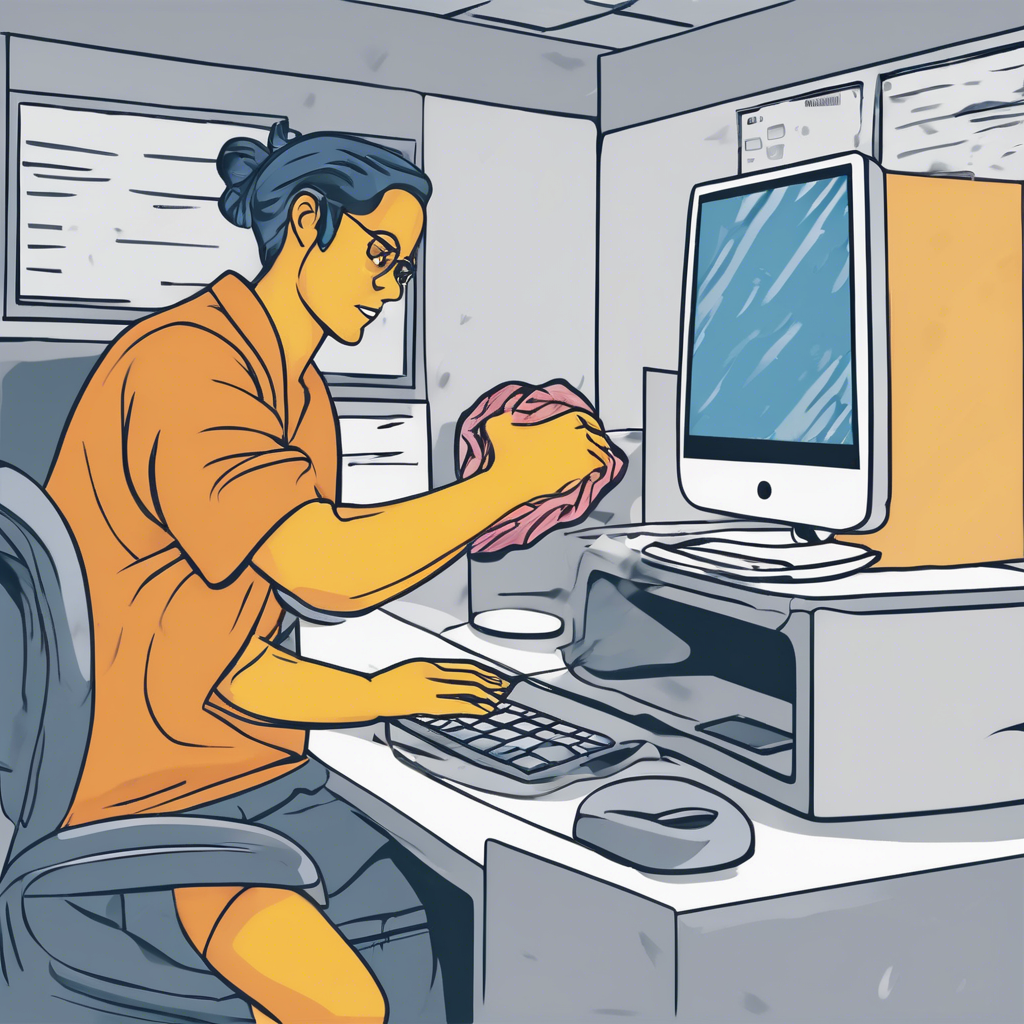Best Practices for Cleaning Electronics in the Workplace: A Sparkling Solution
Ah, the modern workplace. A symphony of humming servers, glowing screens, and the ever-present threat of dust bunnies staging a coup d’état on your precious tech. Cleaning electronics isn’t just about aesthetics; it’s about preventing costly malfunctions and ensuring optimal performance. It’s a delicate dance, a high-stakes game of hygiene versus hardware, and, ironically, a surprisingly dirty job.
Think of it this way: the meticulous care given to a priceless Ming vase is not so different from the attention a high-end server demands. One wrong move and… well, you get the picture. The difference? You can probably replace that vase; a shattered server cluster is a different kind of heartbreak.
The Antithesis of Cleanliness: Dust and Static
The enemy? Not some fantastical monster, but the insidious combination of dust and static electricity. Dust acts like microscopic sandpaper, gradually wearing down delicate components. Static, meanwhile, is a silent killer, capable of frying circuits with a sudden zap – like a miniature lightning strike within your perfectly ordered office.
I once witnessed a particularly dramatic example of this in a friend’s graphic design studio. A sudden power surge, presumably triggered by static, wiped out their entire system. The resulting silence was deafening – a stark antithesis to the usual hum of creative energy.
Safe Cleaning Strategies: A Methodical Approach
Before you unleash your inner cleaning fanatic, remember: electronics are not your average surfaces. Improper cleaning can be as damaging as neglect. Think of it as a delicate surgery, not a demolition derby.
The Power of Prevention: A Proactive Strategy
- Regular dusting: Use a microfiber cloth – it’s like a magnet for dust, picking up particles without scratching. Think of it as a gentle caress, not an aggressive scrub.
- Compressed air: For hard-to-reach areas, a can of compressed air is your trusty sidekick. But use it judiciously; excessive pressure can damage delicate parts.
- Anti-static wrist straps: For those particularly sensitive electronics, an anti-static wrist strap grounds you, preventing the build-up of static charge. It’s a small investment with a huge payoff.
Tackling Specific Electronics: Specialized Solutions
Different electronics require different approaches. Cleaning a laptop screen is not the same as cleaning a keyboard. Here are some best practice guidelines:
- Monitors and screens: A slightly damp microfiber cloth works wonders. Avoid harsh chemicals; they’re like a toxic cocktail for sensitive coatings.
- Keyboards: Compressed air removes crumbs and debris. For stubborn grime, gently wipe with a slightly damp cloth.
- Mice and trackpads: A slightly damp cloth, followed by a thorough drying, is usually sufficient. Avoid submerging them, no matter how tempting it might seem.
- Phones and tablets: Similar to screens, a slightly damp microfiber cloth is your best bet. Use a screen protector if you have one.
The Importance of Professional Cleaning Services
For larger offices or more complex electronics, professional cleaning services are invaluable. They have the expertise, equipment, and products to tackle the job safely and effectively. It’s like calling in the cavalry to handle a particularly nasty dust storm.
Think of it this way: would you perform your own brain surgery? Probably not. Similarly, entrusting the intricate cleaning of your workplace technology to trained professionals is both prudent and cost-effective in the long run. Prevention is always cheaper than cure, especially in the world of electronics.
Regular cleaning, preventative measures and, when needed, the help of professionals, is the key to a healthy and productive workplace, free from the tyranny of dust and static. A sparkling clean electronic environment is, after all, a reflection of efficiency and professional excellence. The irony, of course, is that achieving this requires a bit of “dirt work.”
💻🧹✨
